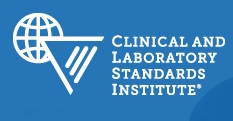Members Login

Channels
Special Offers & Promotions
CLSI Released an Updated Standard on Evaluation of Precision of Quantitative Measurement Procedures
The Clinical and Laboratory Standards Institute (CLSI) has published an updated standard—Evaluation of Precision of Quantitative Measurement Procedures; Approved Guideline—Third Edition (EP05-A3).
 This document provides guidance for studies intended to establish the within-site precision performance characteristics of quantitative measurement procedures used in clinical laboratories, and also for studies addressing site-to-site variability.
This document provides guidance for studies intended to establish the within-site precision performance characteristics of quantitative measurement procedures used in clinical laboratories, and also for studies addressing site-to-site variability.
In CLSI document EP05-A3, multiple experimental protocols are described, along with considerations on how to select and optimize the protocol(s) best suited for a specific measurement procedure (or “assay”) and its intended use. Included in this version of EP05-A3 are guidelines for duration, experimental designs, materials, data analysis, summarization, and interpretation—techniques adaptable for a wide spectrum of measurands and system complexity.
This third edition of the standard narrows the scope of EP05 by limiting its discussion of single-site experimental designs to procedures suitable for establishing or validating precision performance characteristics. Therefore, EP05 is now addressed primarily to manufacturers and developers. End-user laboratories verifying repeatability and within-laboratory precision claims should refer to CLSI document EP15-A3—User Verification of Precision and Estimation of Bias; Approved Guideline—Third Edition for recommendations. The precision verification protocol in that guideline has been tailored for compatibility with EP05’s single-site study designs.
The single-site protocol familiar from previous editions of EP05—calling for measurements on 20 days, with two runs per day and two replicates per run for a given sample, reagent lot, etc.—is retained in this third edition as a standardized experiment for use by manufacturers and developers in evaluating the repeatability and within-laboratory (within-device) precision of a measurement procedure (or “assay”).
In developing the standardized protocols in this document, many recommendations for duration, inclusion of quality control procedures, and methods of determining the relevant sources of variation were carefully considered. The resulting protocols represent a balance between complexity of design and data analysis, and simplicity of implementation and efficiency. This document was written to provide general guidance consistent with other international consensus standards.
This document is intended for use by manufacturers of quantitative measurement procedures and for laboratories that develop or modify such procedures.
Media Partners


